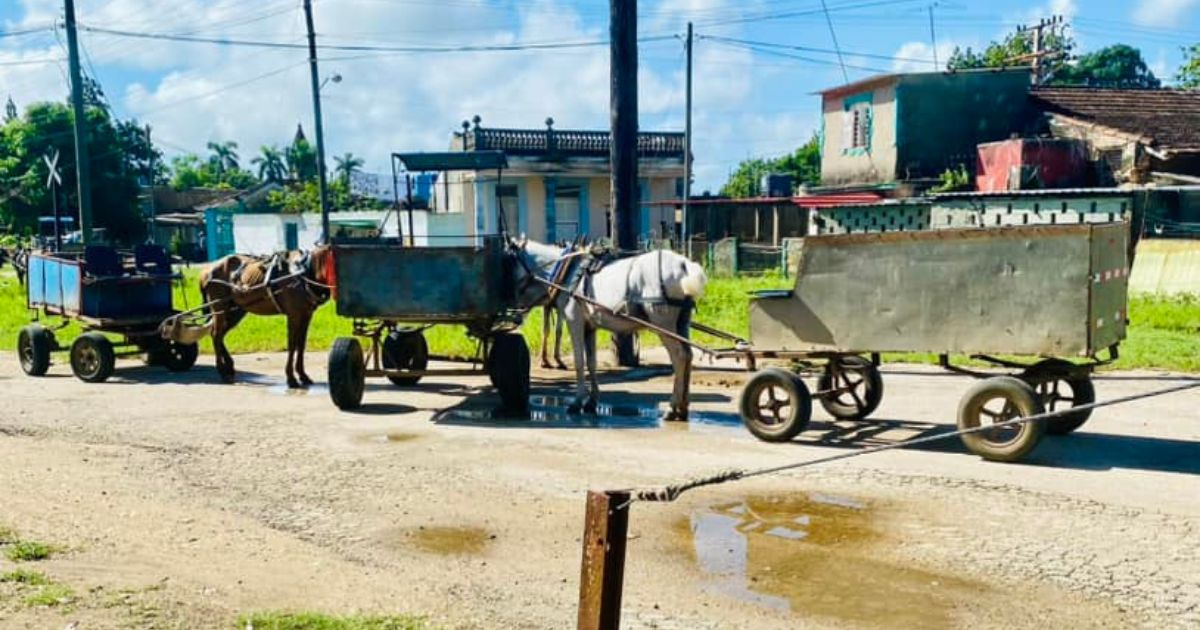Animal rights advocate Yenney Caballero reported a disturbing case of animal abuse this Wednesday in San José de las Lajas, Mayabeque. According to Caballero, horses used to pull carriages are forced to stand in the scorching sun with heavy loads, while their owners relax in the shade.
Caballero revealed on Facebook that she witnessed firsthand the harrowing conditions these animals endure. She described how, while caretakers lounged and chatted in the shade, the horses stood under the blazing sun, emaciated and with their heads bowed, suffering like slaves.
The animal protector highlighted that there are many shaded areas in the municipality that could serve as resting spots for the hard-working horses that support entire families. She pleaded for information on the appropriate place or institution to approach for a dialogue to find a solution to the horses' plight: “I just ask to be heard so we can move them to a shaded area.”
Caballero concluded her plea with a guiding principle of her activism: “Animals deserve respect; they are living beings, and I am their voice.”
Previous Incidents of Animal Abuse in Cuba
This is not the first time activists have taken to social media to denounce such animal abuse, which manifests differently in various locations.
In July, Cuban animal rights activists reported on social media that the police in Varadero, Matanzas, ordered carriage drivers to keep their horses in an area without shade until they were rented by tourists. Miriam Romero Nasiff shared in the Facebook group "Sociedad Protectora de Animales en Cuba" that the police directed the drivers to park their horses under the intense sun with no shade from trees or shelters.
“Why this? Where is the animal protection? This measure is quite cruel,” noted the activist, who clarified that the text and photos of the complaint were sent by a friend.
The incident sparked outrage among activists, who amplified the complaint on social media.
In June, multiple Cubans expressed their anger on social media over the abuse of a horse in Villa Clara that led to the animal's death. Activist Yenney Caballero, a staunch defender of animal rights in Cuba, also took to Facebook to call for urgent government action to punish those responsible and to advocate for harsher penalties under the Animal Welfare Decree.
Last year, Cuban animal rights activist Betty Batista confronted the abusive owner of a pony, seizing the animal and sheltering it in her home in Havana until authorities arrived. Batista posted a video on her Facebook page showing her facing off with the animal’s owners when they came to reclaim it, telling them she would only return the pony if they left an official document for police tracking.
Animal Abuse in Cuba: Key Questions Answered
Given the recurrent incidents of animal abuse in Cuba, many are seeking answers on how to address and prevent such cruelty. Here are some frequently asked questions and their answers:
What can be done to protect animals from abuse in Cuba?
Advocates suggest stronger enforcement of existing laws, greater public awareness, and harsher penalties for abusers. Activists like Yenney Caballero also recommend creating shaded resting areas for working animals.
Who can activists and concerned citizens contact to report animal abuse?
Reports can be made to local animal protection groups, municipal authorities, or directly to the police. Social media platforms are also useful for raising awareness and mobilizing public support.
What are the current regulations regarding animal welfare in Cuba?
Cuba has an Animal Welfare Decree that outlines the treatment and protection of animals. Activists are pushing for amendments to this decree to include stricter penalties and more comprehensive protections.
